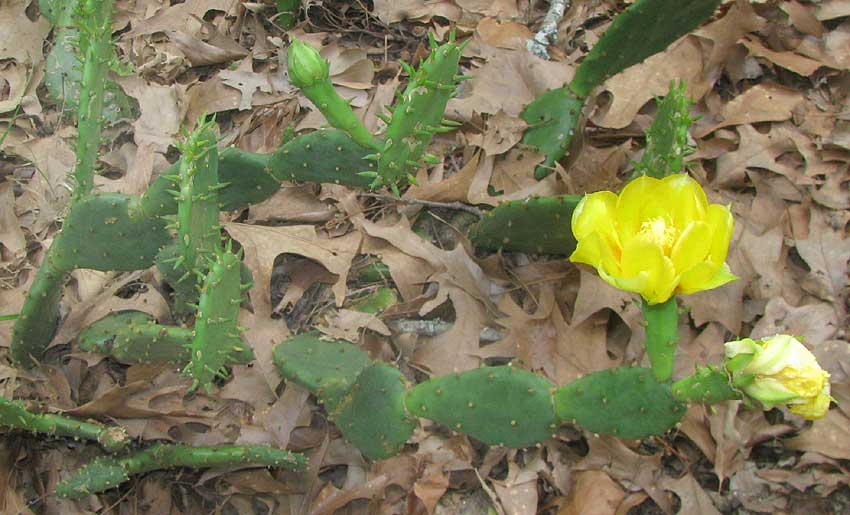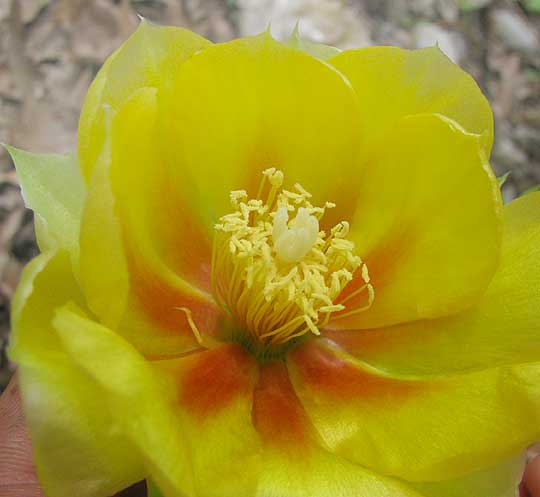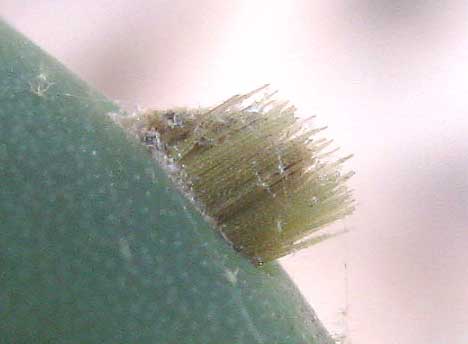Excerpts from Jim Conrad's
Naturalist Newsletter

from the the May 13, 2012 Newsletter issued from the woods of the Loess Hill Region a few miles east of Natchez, Mississippi, USA
WESTERN PRICKLYPEAR
Pricklypears are cacti of the genus Opuntia, of which about 200 species are recognized. In Karen's garden they're flowering now, as shown above. A 2½-inch wide (6cm) flower with a reddish center and a cream-colored or maybe whitish, five lobed stigma arising from among a tuft of numerous, yellow stamens is shown below:

In the online Flora of North America this keys out to the Western Pricklypear, OPUNTIA MACRORHIZA, whose natural area of distribution occurs a good bit west of here. However, Karen says she dug up this cactus from a woods in northwestern Arkansas, so it all makes sense. The Eastern Pricklypear, Opuntia humifusus, which is native to Mississippi, bears flowers that are completely yellow inside and the stigmas are white. I read that the Eastern and Western species may not be distinct from one another, though most taxonomists continue to separate them.
Some Western Pricklypears are heavily armored with stout spines but others, like ours, are spineless. However, those pale spots scattered across the pads' faces bear tufts of spiny items called glochids that are so small and pale that you don't see them unless you look hard. But just lightly touch your finger against a patch of glochids and they'll stick into your skin and be hard to remove. If you don't remove them, however, before long they'll penetrate to a nerve, and it'll hurt. You can see a tiny patch of glochids close-up below:
